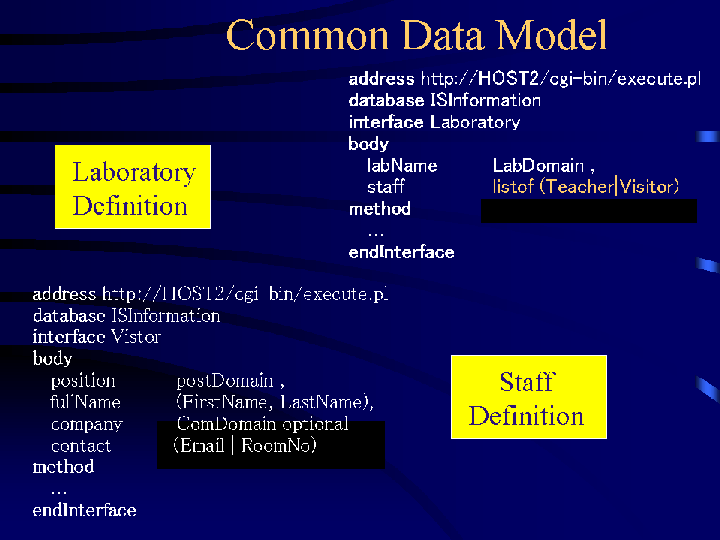
Figure 1


,where t0 is an object variable and {Ai} is an attribute. An arrow (->) denotes traversing down an edge in a nested structure of a page. A double arrow (=>) followed by an ID name that wraps its next result-page denotes traversing an external link between different pages. The [] is optional andt0->{A1}-> ... ->{Ai}=>IDName ->{Aj}->[<Domain>]... ->{An}
is interpreted to get first-names of all staffs in all academic pages in a given instance of Department page.D->{academicPage}=>Academic->{laboratories}->{staffs}->{fullName}
where CTi (1 <= i <= j) is one of j patterns in a set of derived links for navigating over the sequence WIS1, WIS2,...,WISn. Namely, CTi is a condition expression that contains ANDs of Cijs, s.t.CT1 or CT2 or ... or CTj
where Cij (2 <= j <= n) = the condition specifying a derived link from WISj-1 to WISj, and Ci1 = the condition to access the first front page.CTi = Ci1 and Ci1 and ... and Cin
where ...
and ...
and (WIS2-> methodOfWIS2(WIS1 ->{A}<DM1>,
WIS1->{B}->{D}->{E},
WIS1->{B}->{D}->{F})
or
WIS2-> methodOfWIS2(WIS1 ->{A}<DM2>,
WIS1 ->{B}->{D}->{E},
WIS1 ->{B}->{D}->{F}))
and ...
In this way, the path expressions enable us to write down all queries
in a DNF of condition expressions on atomic domains.